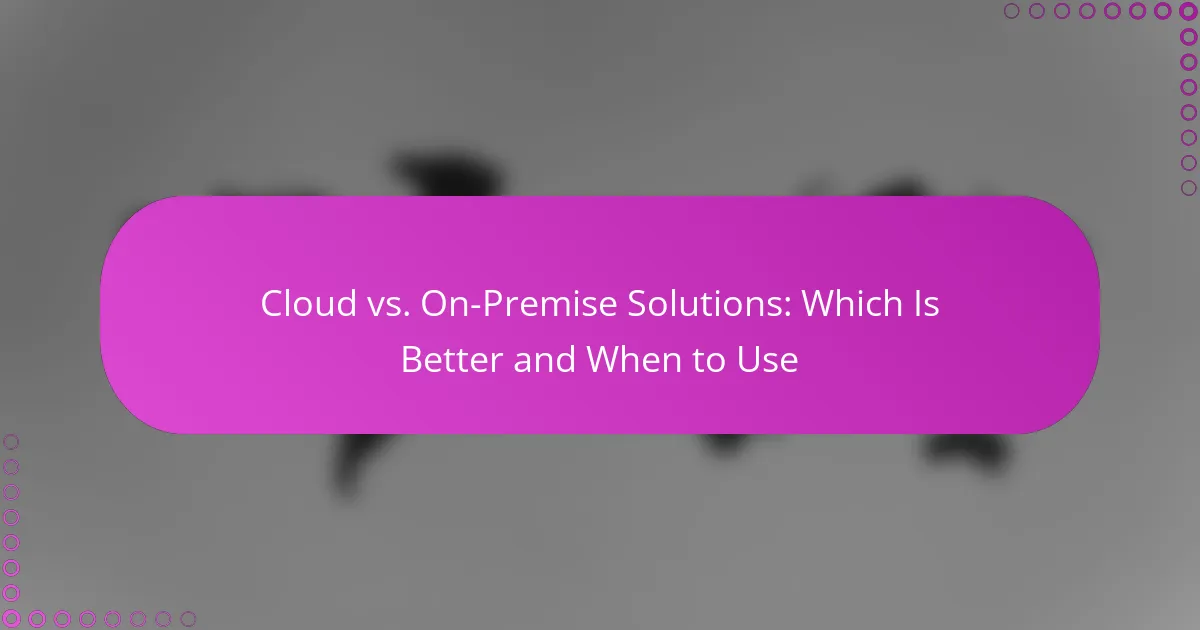Microservices architecture offers a strategic approach to enhance scalability by breaking applications into smaller, independent services that can be managed individually. This modularity allows organizations to adapt swiftly to changing demands while optimizing resource use. However, careful evaluation of current infrastructure, business goals, and team expertise is essential to ensure a successful transition to this architecture.

What are the benefits of microservices architecture for scalability?
Microservices architecture enhances scalability by allowing applications to be divided into smaller, independent services that can be developed, deployed, and scaled individually. This approach enables organizations to respond quickly to changing demands and optimize resource allocation effectively.
Improved resource utilization
Microservices architecture allows for better resource utilization by enabling services to run on different servers or containers based on demand. This flexibility means that resources can be allocated dynamically, ensuring that underutilized services do not consume unnecessary resources while high-demand services receive the necessary support.
For instance, if a particular service experiences a spike in traffic, additional instances can be spun up quickly without affecting other services. This targeted approach leads to cost savings and improved performance.
Independent scaling of services
With microservices, each service can be scaled independently based on its specific needs. This means that if one service requires more processing power, it can be scaled up without impacting the entire application. This independence allows for more efficient use of resources and can lead to significant cost reductions.
For example, an e-commerce platform may need to scale its payment processing service during peak shopping seasons while keeping other services at their regular capacity. This selective scaling helps maintain optimal performance during high-demand periods.
Enhanced fault isolation
Microservices architecture improves fault isolation, meaning that if one service fails, it does not bring down the entire application. This isolation allows teams to identify and resolve issues quickly without affecting other services, leading to increased reliability.
For example, if a user authentication service encounters an error, other services like product catalog or order processing can continue to function normally. This resilience is crucial for maintaining user satisfaction and operational continuity.
Faster deployment cycles
Microservices enable faster deployment cycles by allowing teams to work on different services simultaneously. This parallel development reduces the time needed to release new features or updates, as changes can be made to individual services without waiting for the entire application to be ready.
Organizations can adopt continuous integration and continuous deployment (CI/CD) practices, leading to more frequent releases and quicker responses to market changes. This agility is essential in competitive environments.
Technology diversity
Microservices architecture supports technology diversity, allowing teams to choose the best tools and languages for each service. This flexibility enables the use of the most suitable technologies for specific tasks, optimizing performance and development efficiency.
For instance, a data-heavy service might benefit from using a language optimized for data processing, while a user interface service could leverage a different framework for better user experience. This diversity can lead to improved overall system performance and developer satisfaction.

How to evaluate microservices architecture for your organization?
To evaluate microservices architecture for your organization, assess your current infrastructure, identify your business goals, and evaluate your team’s expertise. This structured approach ensures that the transition to microservices aligns with your operational needs and capabilities.
Assess current infrastructure
Begin by analyzing your existing IT infrastructure, including hardware, software, and network capabilities. Determine whether your current systems can support the distributed nature of microservices, which often requires robust cloud services and container orchestration tools.
Consider the scalability of your current architecture. If your systems struggle under increased loads, transitioning to microservices could provide the flexibility needed to handle traffic spikes. Evaluate your database systems as well, as microservices often require decentralized data management.
Identify business goals
Clearly define your business objectives to guide your evaluation of microservices architecture. Are you aiming for faster deployment times, improved scalability, or enhanced fault tolerance? Understanding these goals will help you determine if microservices align with your strategic vision.
Prioritize your goals based on urgency and impact. For example, if rapid scaling is critical for your business, focus on microservices that facilitate horizontal scaling and load balancing. Ensure that your goals are measurable to track the success of your microservices implementation.
Evaluate team expertise
Assess your team’s current skills and experience with microservices and related technologies. A successful transition requires knowledge of containerization, orchestration tools like Kubernetes, and microservices design patterns. Identify any skill gaps that may hinder your implementation.
Consider investing in training or hiring new talent to fill these gaps. A well-prepared team can significantly reduce the risks associated with adopting microservices. Encourage a culture of continuous learning to keep pace with evolving technologies and practices in microservices architecture.

What are the key challenges in adopting microservices architecture?
Adopting microservices architecture presents several challenges that organizations must navigate. Key issues include increased complexity, service communication overhead, and data management difficulties, all of which can impact scalability and maintainability.
Increased complexity
Microservices architecture introduces a higher level of complexity compared to monolithic systems. Each service operates independently, requiring careful orchestration and management, which can complicate deployment and monitoring processes.
To manage this complexity, organizations should implement robust DevOps practices and utilize container orchestration tools like Kubernetes. These tools help automate deployment, scaling, and management of microservices, reducing the burden on development teams.
Service communication overhead
With multiple services communicating over a network, the overhead associated with service interactions can become significant. Latency issues may arise, particularly if services are not optimized for efficient communication.
To mitigate communication overhead, consider using lightweight protocols such as gRPC or message brokers like Kafka. These technologies can help streamline interactions and improve response times, ensuring that the system remains responsive under load.
Data management issues
Managing data across multiple microservices can lead to challenges such as data consistency and integrity. Each service may have its own database, complicating transactions and data sharing.
Implementing patterns like event sourcing or CQRS (Command Query Responsibility Segregation) can help address these issues. These approaches allow for better data management and synchronization across services, ensuring that data remains accurate and up-to-date.

Which tools support microservices architecture?
Several tools are essential for implementing microservices architecture effectively, enhancing scalability and management. Key tools include Kubernetes for orchestration, Docker for containerization, and Istio for service mesh, each serving distinct roles in the microservices ecosystem.
Kubernetes for orchestration
Kubernetes is a powerful orchestration tool that automates the deployment, scaling, and management of containerized applications. It allows developers to manage complex microservices architectures by providing features like load balancing, self-healing, and automated rollouts.
When using Kubernetes, consider its learning curve and the need for proper configuration. It is beneficial to start with a small cluster to understand its functionalities before scaling up. Common pitfalls include neglecting resource limits, which can lead to performance issues.
Docker for containerization
Docker is a widely used platform for creating, deploying, and managing containers. It encapsulates microservices and their dependencies, ensuring consistency across different environments. This makes it easier to develop and deploy applications quickly.
To effectively use Docker, ensure that your images are lightweight and optimized. Regularly update your images to include security patches and improvements. Avoid running containers as root to enhance security and reduce vulnerabilities.
Istio for service mesh
Istio provides a service mesh that facilitates communication between microservices, offering features like traffic management, security, and observability. It helps manage service-to-service interactions without requiring changes to the application code.
Implementing Istio can simplify complex microservices communication, but it can also introduce overhead. Start with basic features like traffic routing and gradually explore advanced capabilities such as policy enforcement and telemetry. Be mindful of the added complexity in debugging and monitoring with a service mesh in place.

What are best practices for implementing microservices?
Best practices for implementing microservices focus on defining clear boundaries, ensuring independent deployment, and maintaining robust communication between services. These strategies enhance scalability and facilitate easier management of complex applications.
Define clear service boundaries
Establishing clear service boundaries is crucial for effective microservices architecture. Each service should encapsulate a specific business capability, allowing teams to develop, deploy, and scale independently. For example, a retail application might separate services for inventory management, order processing, and customer management.
When defining boundaries, consider the Single Responsibility Principle, which suggests that a service should have one reason to change. This helps in minimizing dependencies and reducing the impact of changes across the system. Aim for boundaries that align with business domains, which can be identified through techniques like Domain-Driven Design.
Common pitfalls include creating services that are too granular or too broad. A good rule of thumb is to keep services focused enough to be manageable but not so small that they introduce excessive overhead in communication. Regularly review and adjust boundaries as business needs evolve.










